Waking up to Autumn
and the Ground Cherries
This Fall season has brought some extra life at both the upper limbs and the roots of our family tree. Our most ancient one is on that internal rollercoaster ride towards the next life with the Creator, and the family is hanging together more closely. At the other end of the tree there has been extra time with our out-of-town grand-brat :-D who has done some extended visits this season.
The proper thing to do with this 18 month old is to get him outside to explore, and follow close behind to prevent any brain injury or inappropriate ingestion of flora, fauna and minerals. After he spins off the energy, I continue with a guided tour via stroller, which of course includes weed instruction. This results in a kid who’s ready for a good nap. 😎


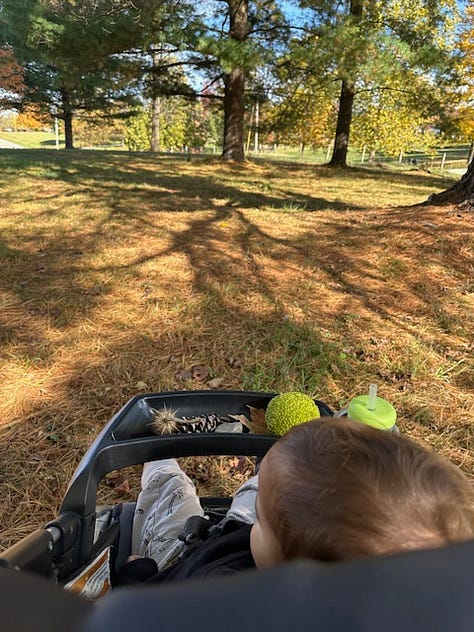
While these times are extra special and not to be missed, they do take ‘nerd-power’ away from generating comprehensive reports for you from the wonderful world of weeds. Therefore it’s time to do autumn at weedom, and top it off with introduction to an unobtrusive edible fruit.
The Spring calves have reached the age to be weaned from their moms in the Fall, and none of them like this. The cacophony from both moms and babies goes on for 2-3 days, and we sort of deserve the loss of sleep for doing this dastardly deed. Audio is available here.

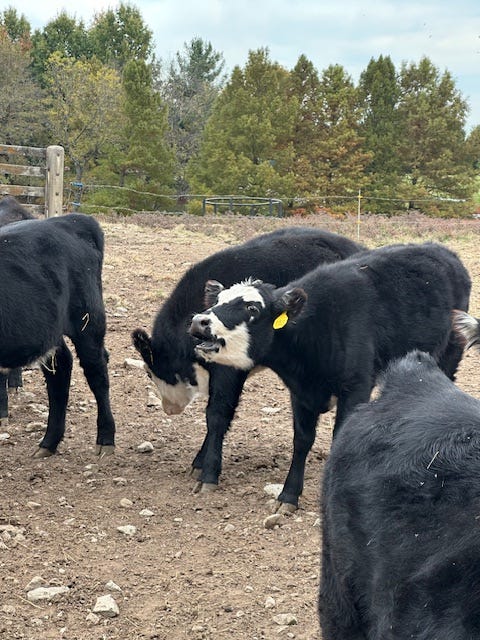
However they are adapting.
The crew from Spring of ‘24 now occupy the north part of the farm, and visit for their hydration and some supplemental grain. One of them is below. Behind him some cypress trees are firing up by the creek.
October to November in our climate brings the return of a number of our spring edibles, giving us a second chance for some potent greenery. After I cleared an outer garden for a layer of mulch, a near mono-culture of shepherd’s purse microgreens appeared. I chopped bunches of the tiny plants with a scissors, and we had quite a few meals featuring this harvest. This stuff tastes great raw or sautéd or steamed. It helps to remember where the plants went to seed last spring to know where to look in the fall, as well as next year. The flavor and smell when picked is unmistakably mild with a hint of garlic.
The spring bitters have also reappeared in force: ground ivy, and purple dead nettle and dandelions. Still waiting on the chickweed, wintercress and other mustards. The latest lawn mowing gave forth the aroma of wild garlic which typically is the last green “grass” in the yard.
It appears that our growing season might not be quite long enough for full passion fruit power. But we got a few which actually ripened to edibility before it got too cold. It’s mango-citrus to me. Yum!
The cold brings an end to the bugs every year, but I’ve never witnessed more bumble bees at their actual demise prior to hosting passionfruit and sacred basil.
Sunday night, the first snow arrived, and it continued into Monday, leaving about a 2 inch blanket on the grass which didn’t last long. In the morning, our gray cat, Renob of weedom requested to be let out. I opened the door to the front porch and he darted out, saw snow, screeched to a stop, and gave me an indescribable look of annoyance.
Not my fault, kittie. Deal with it.
After about an hour, he reappeared on the cistern top, wanting back in. Cats hate change.
Onto the Ground Cherry.
Some of our readers still have a chance to harvest our featured weed, the ground cherry, but the cold front that brought a bit of snow to zone 6 of midwest U.S. flyover country has frozen much of the more northerly regions. Still you will see the remnants of this wild, mini-tomatillo plant, and will know where to look next year. These plants pop up, unbidden in our gardens, hayfields, and most recently have established themselves by the north west corner of our house. Ground cherries belong to the Solanaceae (nightshade) family, along with the potato, tomato, peppers, goji berry, eggplant and Jimson weed.
There are 80 or more species in the Physalis genus, most of which produce edible fruit. The tomatillos are most famous cultivated species, which produce fairly large fruits used in salsa verde recipes. There are also some cultivated ground cherry species, which are selected for larger or sweeter fruits. There are about 30 species of wild ground cherries in the U.S. which produce fruits from about 8 to 18 mm, or 0.25 to .75 inches. Some green and some sweeter purple tomatillos have been grown at weedom, and the fruits tend to fill up and eventually burst the papery husks that surround them. In contrast, the green ground cherry husks remain much larger than the fruit inside, and dangle like paper lanterns from the plants until they ripen. By then the covering lightens to a parchment color, and the whole wrapped fruit drops from the plant. Gathering from the ground assures that you’ll be collecting the ripest, sweetest fruit. The green color will be mostly replaced by a yellowish to golden or orange color. There are some species in existence which produce a red fruit.
The fruit of some of the species can be eaten when green, but that of certain hairier species should only be eaten when fully ripe. Sam Thayer considers the fruit of one of these species, Physalis heterophylla, (also called clammy ground cherry) to be the best tasting of all. You’ll know clammy ground cherry by the sticky, glandular hairs that cover the stems and leaves of that plant. General advice is to avoid eating quantities of the green bitter tasting fruits, which are more toxic. Remember these plants are in the nightshade family. The leaves and stems of most of these plants generally contain more of the bitter steroidal and/or tropane alkaloids characteristic of the Solanacae, and therefore are not food.
Star shaped flowers of the ground cherries have 5 petals, 5 stamens, and 5 conjoined sepals forming a calyx that persists and swells to form the husk around the fruit which is botanically classed as a berry. These small blooms dangle singly from the leaf axils and range in color from brownish to cream colored or yellow in color, with darker patterns in the center.
Pondering the hairless ground cherry plants at weedom, I have concluded that they’re a type of Physalis longifolia. I’ve been finding and nibbling on the berries since I was a kid. A childhood friend’s father was quite the gardener and forager, and had educated us on palatability of this fruit. Our plants have elliptical leaves with veins that protrude on the underside. The manner of growth and emergence of the leaves, from the stems are reminiscent of skeletal tomato plants. They truly are miniature tomatillo plants. When young, they might be confused with black nightshade (which produces black (edible) berries. Another nightshade, the Carolina horsenettle produces similar colored berries as the ground cherry, but without husks. The horsenettle berries are a do-not-eat, as they seem to become more toxic as they ripen. Those plants look like miniature eggplants with thorns, and the berries have no husks.
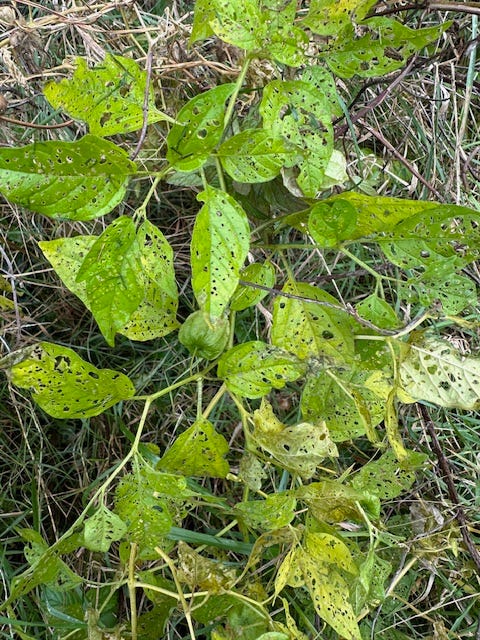
Grazing the berries reveals that bitterness fades as the green fades. I haven’t keeled over from nibbling a few greenish ones :-D. At yellowish green they are an interesting mix of sweet and bitter. At orange or yellow, like the one below, in the open, light colored husk, the berries are mostly sweet with a mild sourness. Those are the tasty berries which should predominate in your harvest. Again, the fruits are the best after they drop to the ground, just like American persimmon.

Inside each fruit are numerous tiny soft seeds, so small that you’ll likely swallow most of them whole. If you allow the fruit to desiccate and spread the seeds, leave them exposed to light in moist soil. Like the chamomile plants, the seeds need sun exposure to germinate.
These berries yield a pretty clean harvest, although they are a little bit sticky on the surface. The husk provides good protection. So they’re convenient for directly picking and eating on the trail when you get hungry, even though unwrapping is a bit laborious. There are not many other edibles that can stay clean after they drop into the mud. Jellies, jams, pies, fruit turnovers are calling for the ground cherries. You can combine them with other fruits as your tastebuds dictate or throw them directly onto salad, on your yogurt, into your smoothie. The most notable nutrients you’ll be adding to your life are considerable amounts of vitamin A, vitamin C and phosphorus.
There are probably some ripe ground cherries still available for many of our readers. What are you doing with yours?



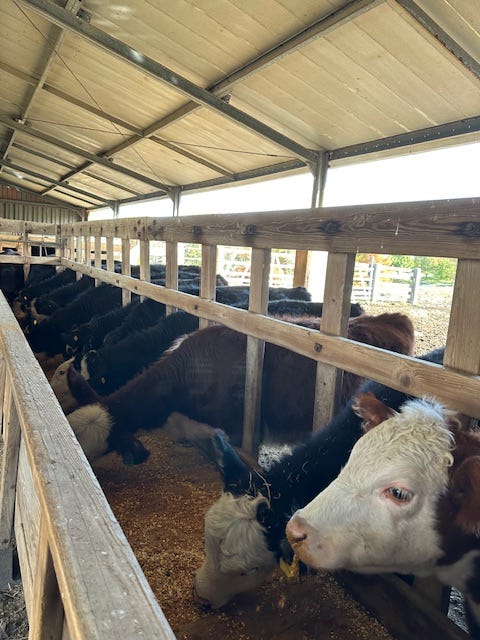
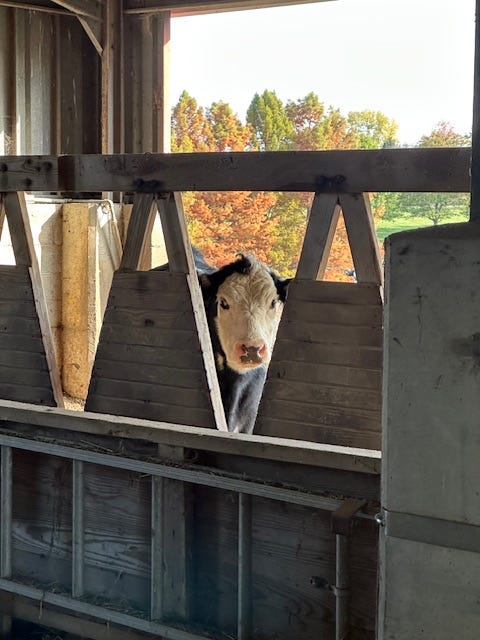
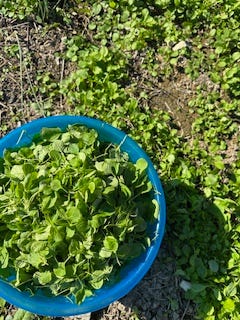
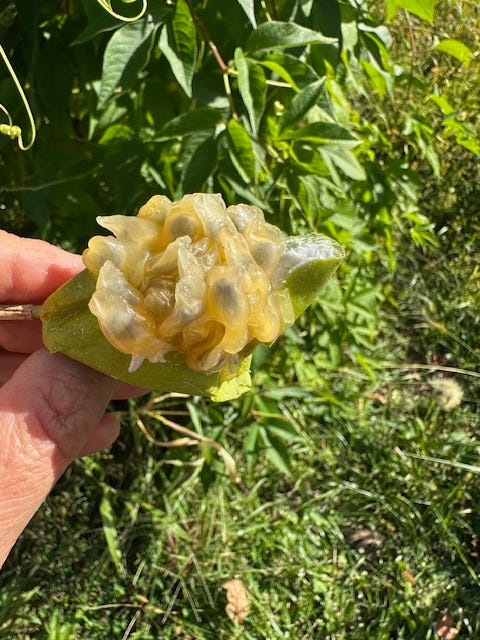

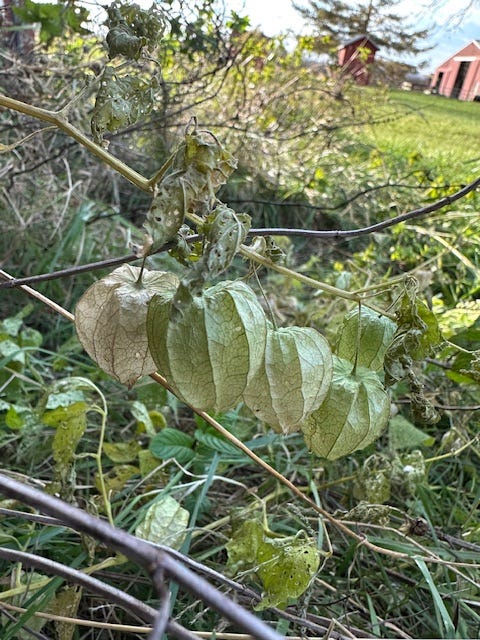

We have something like this growing around our place - southern Queensland, Australia - they grow in vines up the trees in the creek. I used to also have a smaller bush type in central qld and was told they weren’t edible. I was also told the black berry nightshade aren’t edible 🙄So now I’ll have to look into the ones here and see if I can find out more about them.
We love Ground Cherries and eat them in salads and just by the handful. We have raised some of our own, but get most of our supply from Farmer's Markets. A delicious late summer/early fall treat.